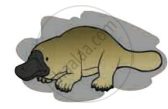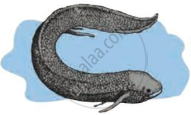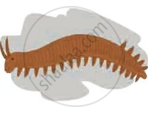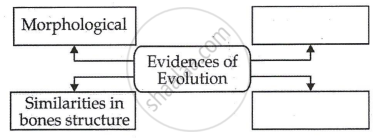Advertisements
Advertisements
Question
Write a short note:
Embryological evidences
Solution
- Embryological evidences arise from comparative study of embryological developmental stages of various vertebrates.
- Embryos of different vertebrates appear similar during the initial stages of development and these similarities gradually decrease as the embryo develops.
- Embryology can be used as evidence of evolution as similarities in initial stages of development indicate common origin of the animals.
APPEARS IN
RELATED QUESTIONS
Differentiate between homology and analogy. Give one example of each.
“Two areas of study namely 'evolution' and 'classification' are interlinked'. Justify this statement.
State a reason for the increased population of dark coloured moths coinciding with the loss of lichens (on tree barks) during industrialization period in England.
Can the wing of a butterfly and the wing of a bat be considered homologous organs? Why or why not?
An example of homologous organs is
Explain the terms analogous and homologous organs with examples.
Give the importance of fossil in support of organic evolution
Name any two temporary embryonic structures in vertebrates which provide evidence for evolution.
What are homologous organs?
Some dinosaurs had feathers although they could not fly birds have feathers that help them to fly. In the context of evolution, this means that ______
The presence of which of the following types of organs in two animals indicates that they are not derived from a common ancestor?
(a) homologous organs
(b) excretory organs
(c) analogous organs
(d) reproductive organs
Write short notes based upon the information known to you.
Connecting link
Explain with suitable examples importance of anatomical evidence in evolution.
_______ is a connecting link between Annelida and Arthropoda.
Complete the following chart:

Explain any three molecular (genetic) evidences in favour of organic evolution.
Differentiate between connecting links and the missing links.
Very short answer question:
What is vestigeal organ?
Long answer question.
Would you consider wings of butterfly and bat as homologous or analogous and why?
_____________ is a vestigial organ in human beings.
Find an odd one out.
I am a connecting link between reptiles and mammals. Who am I?
Appendix : vestigial organ : : Peripatus : ____________
Complete the flowchart.

Explain any five types of evidence that support the theory of evolution.
Write the answers to the questions by observing the figure below.
 |
 |
 |
| (a) | (b) | (c) |
- Write the name of the animal ‘(a)’ in the figure.
- Write the name of the animal ‘(b)’ in the figure.
- Write the name of the animal ‘(c)’ in the figure.
- Which evolutionary evidence is illustrated by this figure?
- Write the definition of that evidence for evolution.
The degenerated and non-functional organs found in an organism are called ______.
How do you differentiate homologous organs from analogous organs?
Select the CORRECT match.
Which of these is not a vestigial organ in human beings?
Homologous organs are:
Basic principles of embryonic development were pronounced by:
Explain divergent evolution in detail. What is the driving force behind it?
Write down the difference between homologous and analogous organs.
Define the term:
Homologous organs
Complete the following conceptual picture:

